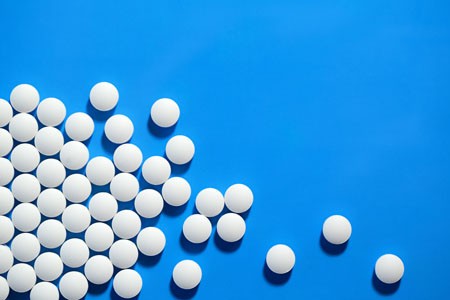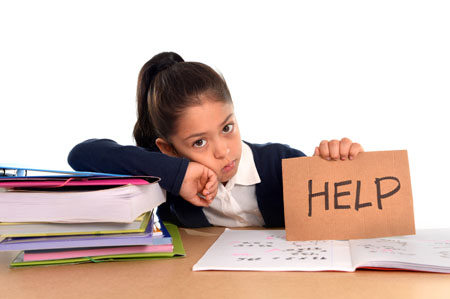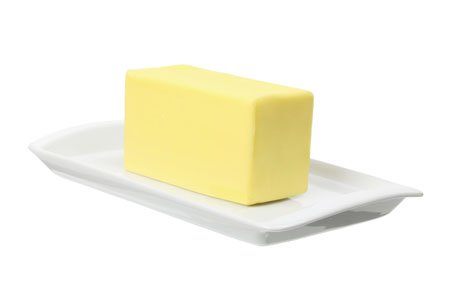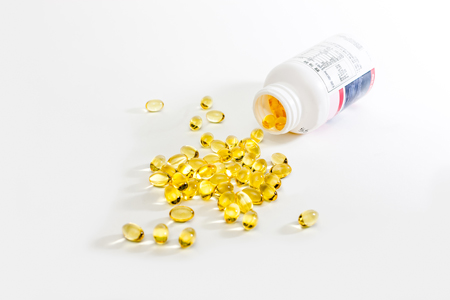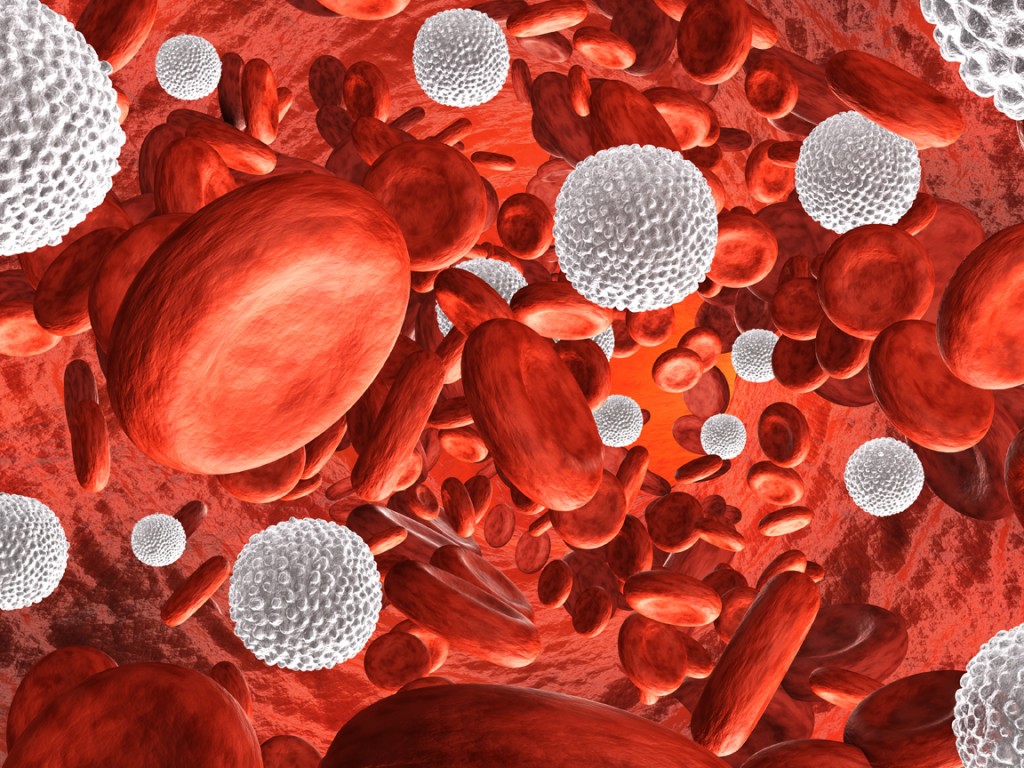Cognitive Behavioral Prevention Program Can Reduce Incidence of Depression Among Teens
Adolescents whose parents have a history of depression are at greater risk for depression themselves. A new study suggests that a cognitive-behavioral prevention program aimed at these teens can reduce depression rates compared to the usual care.
The study, by David A. Brent and colleagues in the journal JAMA Psychiatry, included 316 participants aged 13–17, each of whom had a parent with a current or prior depression. Half of the participants participated in the cognitive-behavioral prevention program in addition to usual care initiated by their families. The program consisted of 8 weeks of 90-minute group sessions focused on developing positive thinking habits and improving problem solving, followed by six monthly sessions. The training was based on the Adolescents Coping with Depression program described in a June 2009 JAMA article by Garber et al.
The group who participated in the prevention program had a lower incidence of depression than the group who received only the usual care, and this difference persisted over six years of followup. Most of this effect was due to a reduced incidence of depression in the first nine months following the intervention. (Depression was roughly equal among the two groups at two later followups.)
Importantly, the benefit of the prevention program was only seen among adolescents whose parents were not depressed at the time of enrollment in the study, underscoring the importance of treating parents in order to keep the whole family healthy.
Benefits of the prevention program included reductions in onset of depression and days depressed, and improvement in interpersonal and academic competence.
Brent and colleagues say that the study shows that it is possible to prevent depression, and this can have long-term developmental consequences. They encourage focusing on the entire family’s mental health treatment.
While the main benefits came early, Brent suggests that booster sessions for teens who begin to show symptoms of depression might refresh the benefits of the prevention program at a later time.
Editor’s Note: This study has enormous health implications as depression in adolescents tends to recur and is associated with a more difficult course than depression beginning in adulthood. Preventing depressions would theoretically have positive consequences for both psychiatric and physical health, as depression is associated with increased risk of suicide and decreased longevity from increases in cardiovascular disease. Researcher Joan Luby recently reported that children with prepubescent onset of depression have decreased hippocampal volume in adolescence, so it is possible that preventing depression may have positive implications for brain volume and function.
Several Types of Psychotherapy Effective in Childhood Bipolar Disorder
Childhood onset bipolar disorder can be highly impairing. Treatment usually includes medication, but several types of psychotherapy have also been found to be superior to treatment as usual. These include family focused therapy, dialectical behavior therapy and multifamily psychoeducation groups, including Rainbow therapy.
Family focused therapy, developed by David Miklowitz, consists of psychoeducation about bipolar disorder and the importance of maintaining a stable medication routine. Families are taught to recognize early symptoms of manic and depressive episodes, and how to cope with them. Families also learn communication and problem solving skills that can prevent stressful interactions.
Dialectical behavior therapy was developed by Marsha Linehan, initially for the treatment of borderline personality disorder. It can be useful in bipolar disorder because participants learn how to manage stressors that might otherwise trigger depression or mania. DBT teaches five skills: mindfulness, distress tolerance, emotion regulation, interpersonal effectiveness, and self management.
Multifamily psychoeducation was developed by Mary Fristad. In groups, children and parents learn about mood disorders, including how to manage symptoms, and also work on communication, problem solving, emotion regulation, and decreasing family tension.
Rainbow therapy is a type of multifamily approach also known as child and family-focused cognitive-behavioral therapy (CFF CBT). It integrates individual cognitive-behavioral therapy with family psychoeducation and mindfulness skills training. In a recent article in the journal Evidence Based Mental Health, Miklowitz reviewed the current research on Rainbow therapy. While the research to date has many limitations, he highlighted some benefits of Rainbow therapy: its flexibility, and its focus on treating parents’ symptoms along with children’s illness.
Saphris Reformulated for Kids with Bipolar I
The atypical antipsychotic asenapine has been reformulated for bipolar I disorder in children aged 10–17. The drug (trade name Saphris) was approved by the Food and Drug Administration (FDA) in 2009 for adults with schizophrenia and bipolar disorder. It is sometimes used as a treatment for mixed episodes (depression with some symptoms of mania).
The new formulation consists of 2.5mg tablets that are taken sublingually (under the tongue), and are available in a black cherry flavor. These can be prescribed as monotherapy for the acute treatment of manic or mixed episodes in children and teens.
Subthreshold Episodes of Mania Best Predictor of Bipolar Disorder in Children
Relatively little attention has been paid to the children of a parent with bipolar disorder, who are at risk not only for the onset of bipolar disorder, but also anxiety, depression, and multiple other disorders. These children deserve a special focus, as on average 74.2% will receive a major (Axis 1) psychiatric diagnosis within seven years.
New research published by David Axelson and colleagues in the American Journal of Psychiatry describes a longitudinal study comparing children who have a parent with bipolar disorder to demographically matched children in the general public. Offspring at high risk for bipolar disorder because they have a parent with the disorder had significantly higher rates of subthreshold mania or hypomania (13.3% versus 1.2%) or what is known as bipolar disorder not otherwise specified (BP-NOS); manic, mixed, or hypomanic episodes (9.2% versus 0.8%); major depressive episodes (32.0% versus 14.9%); and anxiety disorders (39.9% versus 21.8%) than offspring of parents without bipolar disorder. Subthreshold episodes of mania or hypomania (those that resemble but do not meet the full requirements for bipolar disorder in terms of duration) were the best predictor of later manic episodes. This finding was observed prospectively, meaning that patients who were diagnosed with manic episodes during a follow-up assessment were likely to have been diagnosed with a subthreshold manic or hypomanic episode during a previous assessment.
The study included 391 children (aged 6–18) of at least one bipolar parent, and compared these to 248 children of parents without bipolar disorder in the community. The participants took part in follow-up assessments every 2.5 years on average, for a total of about 6.8 years. Each follow-up assessment included retrospective analysis of symptoms that had occurred since the previous assessment.
In addition to having more subthreshold manic or hypomanic episodes; manic, mixed, or hypomanic episodes; and major depressive episodes, the high-risk children also showed more non-mood-related axis 1 disorders, including attention deficit hyperactivity disorder (ADHD), disruptive behavior disorders, and anxiety disorders than the children of parents without bipolar disorder. Axelson suggested that monitoring for these symptoms may help with early identification and treatment.
Children with a bipolar parent were diagnosed with bipolar spectrum disorders at rates of 23% compared to 3.2% in the comparison offspring. Mean age of onset of mania or hypomania in the high-risk offspring was 13.4 years. Of those offspring who had a manic episode, more than half had the episode before age 12, with the earliest occurring at age 8.1.
Compared to previous studies of children of parents with bipolar disorder, this study found that the mean age of onset of manic or hypomanic episodes was younger, possibly because other studies did not include young children. Another new finding was that major depressive episodes were risk factors for mania and hypomania but did not always precede the onset of mania or hypomania in the high-risk offspring.
Parents of children who are at high risk for developing bipolar spectrum disorders should be aware of the common precursors to mania—subthreshold manic or hypomanic symptoms and non-mood disorders—and make sure that clinicians assess for these symptoms and differentiate them from the symptoms of depression or other disorders.
Editor’s Note: In Axelson’s study, 74.2% of the offspring of a bipolar parent suffered a major (Axis I) psychiatric disorder. However, 48.4% of the offspring from the comparison group of community controls also had an Axis 1 psychiatric disorder. These high rates of illness and dysfunction indicate the importance of monitoring a variety of symptom areas and getting appropriate evaluation and treatment in the face of symptoms that are associated with impairment in both high risk children and in the general population.
One way of doing this is for parents to join our new Child Network, a study collecting information about how children at risk for bipolar disorder or with symptoms of bipolar disorder are being treated in the community and how well they are doing. Parents rate their children on a weekly basis for depression, anxiety, ADHD, oppositionality, and mania-like symptoms. Parents will be able to produce a longitudinal chart of their children’s symptoms and response to treatment, which may assist their child’s physician with early detection of illness and with treatment. See here for more information and to access informed consent documents.
Omega-3 Fatty Acids Improve Attention in Boys
A new study finds that omega-3 fatty acid supplementation improves attention in boys both with and without attention deficit hyperactivity disorder (ADHD). The study by Dienke J. Bos and colleagues in the journal Neuropsychopharmacology included 40 boys (aged 8–14) with ADHD and 39 demographically matched controls. Participants were given 10 g per day of margarine supplemented with either omega-3 fatty acids (eicosapentaenoic acid (EPA) and docosahexaenoic acid (DHA)) or placebo.
The children who received EPA/DHA supplementation showed improvements in attention (as rated by parents) compared to those who received placebo. Improvement was greater in the children with ADHD. Supplementation did not affect cognitive control or brain activity on functional magnetic resonance imaging (fMRI). Those boys who received omega-3s showed higher DHA levels on followup.
Mother’s Treatment for Depression Can Affect Children’s Symptoms
Studies have found that when a depressed mother’s symptoms remit, her children are less likely to show psychiatric symptoms. A new study by Myrna M. Weissman and colleagues in the American Journal of Psychiatry randomized 76 mothers to treatment with escitalopram, bupropion, or a combination of the two, and assessed the impact of the mothers’ treatment on their 135 children (aged 7–17).
There were no significant differences in the mothers’ symptoms or remission, but children’s depressive symptoms and functioning improved more if their mothers received (only) escitalopram. Only in that group was a mother’s improvement associated with her children’s improvement.
Mothers in the escitalopram group reported greater improvement in their ability to listen and talk to their children compared to the mothers in other groups, and the children of the mothers in the escitalopram group reported that their mothers were more caring.
Children of mothers with low negative affect improved significantly, while children of mothers with high negative affect only improved if their mothers were in the escitalopram group.
The authors suggest that for a mother’s improvement to help her children’s symptoms, her anxious distress and irritability must be reduced, and these may be better targeted with escitalopram than bupropion.
Omega-3 Fatty Acids Improve Mood and Limbic Hyperactivity in Youth with Bipolar Depression
Children who have a parent with bipolar disorder are at risk for bipolar illness, but it may first present as depression. Treating these children with antidepressants has the risk of bringing on manic episodes. Researchers are looking for treatment options for youth at risk for bipolar disorder.
Robert McNamara and colleagues found that 12 weeks of omega-3 fatty acids (2,100 mg/day) significantly improved response rates in medication-free youth ages 9–20 years compared to placebo (64% versus 36%). Omega-3 fatty acids but not placebo also reduced the activation of limbic structures in the brain (the left parahippocampal gyrus) in response to emotional stimuli.
Editor’s Note: These data add to the literature on the positive effects of 1–2 grams of omega-3 fatty acids in depression. Given the safety of omega-3 fatty acids and the ambiguous effects of antidepressants in bipolar depression, omega-3 fatty acids would appear to a good alternative, especially since the FDA-approved atypical antipsychotics (quetiapine and lurasidone) are not approved for bipolar depression in people under age 18.
Young Rats That Witness Maternal Abuse Show Depression-Like Behavior in Adulthood
Rodents that are subjected to social defeat (being overpowered by a bigger, more aggressive animal) develop a syndrome that resembles human depression—they avoid social interaction, lose interest in sucrose, and do less exploring of new places or other animals. A recent finding showed that even witnessing the social defeat of a peer was enough to bring about the depressive behaviors. The same researchers, led by Samina Salim, recently found that young rats (aged 21–27 days) that witnessed their mother go through the trauma of social defeat showed depression-like behavior themselves as adults (at age 60 days).
The rats saw their mothers defeated by the larger rat every day for seven days. As adults, those who witnessed this abuse exhibited depression-like behavior compared to rats of the same age and gender that had not witnessed abuse. The depressive rats gave up more quickly on a test of forced swimming. Male rats showed great depression-like behavior than female rats.
It has been estimated by the American Psychological Association that 15.5 million children in the US witness physical or emotional abuse of a parent (usually their mother). Children who witness domestic violence often show symptoms of post-traumatic stress disorder (PTSD). This rodent research may lead to a better understanding of the consequences of witnessing trauma in childhood, and potential treatments that could help.
Editor’s Note: These data show that rats have something like empathy, and that the psychological aspects of stress (including verbal abuse in humans and witnessing another’s abuse in rodents) may have profound and lasting consequences on behavior.
Inflammatory Marker NF-kB Elevated in Adolescent Bipolar Disorder
In a poster at the 2014 meeting of the American Academy of Child and Adolescent Psychiatry, researcher Larissa Portnoff reported that NF-kB, a marker of inflammation that can be measured in two types of white blood cells (lymphocytes and monocytes), was significantly elevated in adolescents who had bipolar disorder compared to healthy control participants.
Several other inflammatory markers have been linked to bipolar disorder, including c-reactive protein (CRP) and TNF alpha. The new data about NF-kB suggests that another inflammatory pathway is overactive in the disorder. NF-kB levels did not correlate with the severity of manic or depressive symptoms, as do levels of some other inflammatory markers.
Lamotrigine Effective in Bipolar I Prevention in Adolescents
At the 2014 meeting of the American Academy of Child and Adolescent Psychiatry, researcher Robert Findling reported on a double blind, placebo controlled 36-week study of lamotrigine for children and adolescents with bipolar I disorder. The doses designed for maintenance treatment averaged about 225 mg/day, achieved by very slow increases over time in order to reduce the risk of a serious rash.
Findling found that lamotrigine was more effective than placebo in extending the time until a patient required an intervention for a new mood episode among the older children in the study (aged 13 to 17). Among the younger children in the study (aged 10 to 12), lamotrigine’s effects were not statistically significant compared to placebo. Findling and colleagues concluded that lamotrigine appeared effective in delaying time to onset of a new episode in adolescents with bipolar I disorder.
Lamotrigine is approved by the Federal Drug Administration (FDA) for bipolar disorder in adults only.



